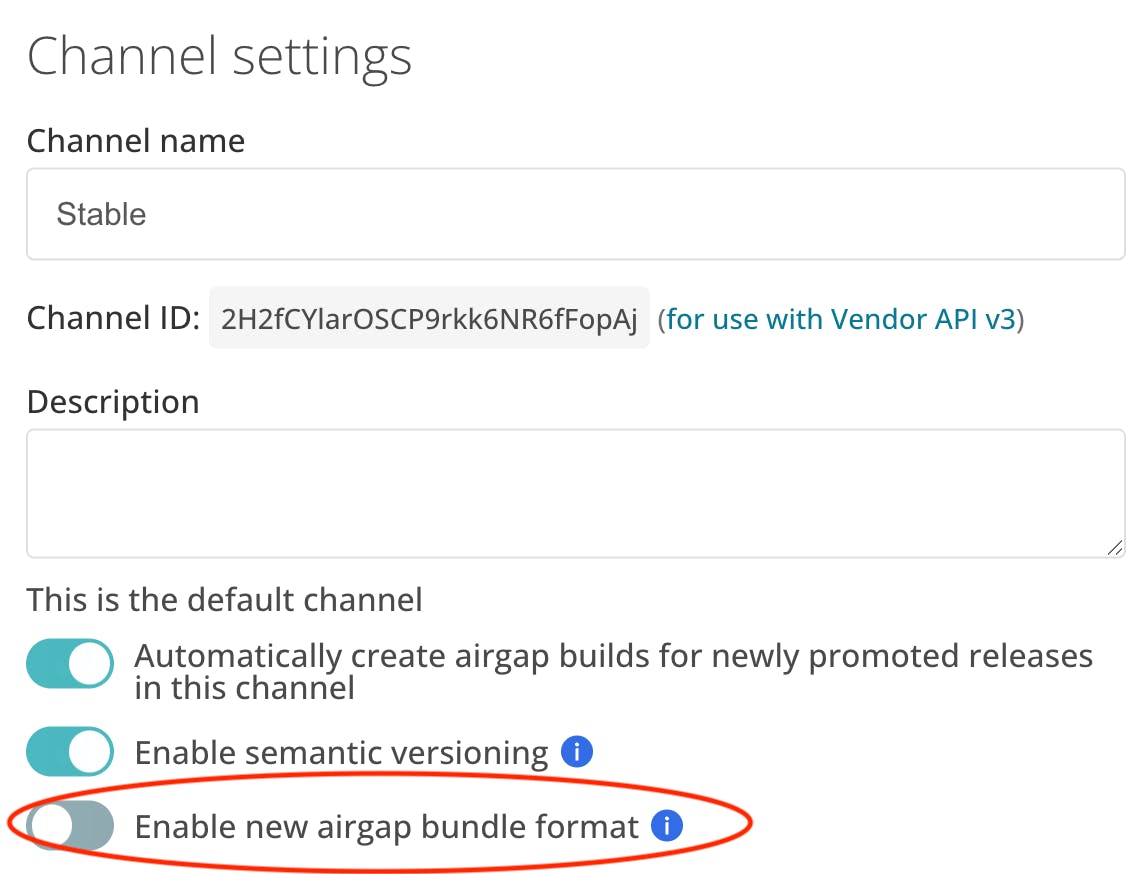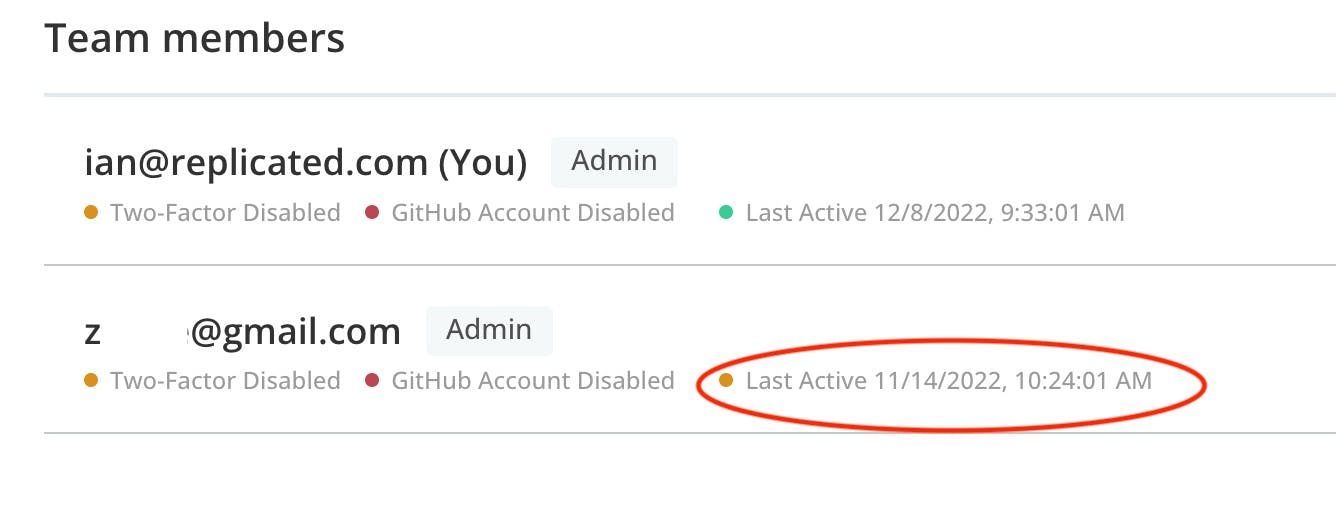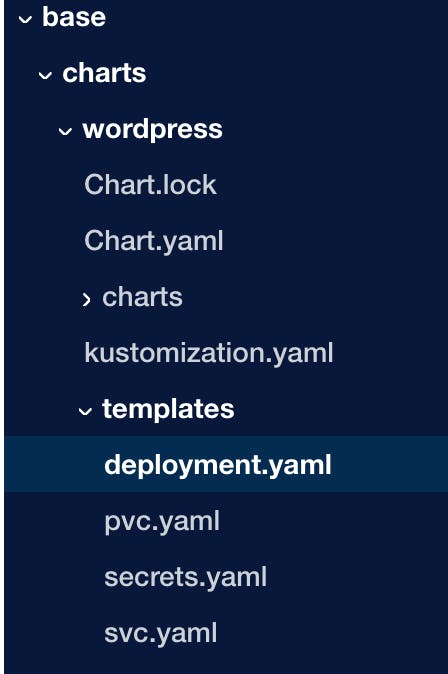November brought with it shorter days and longer nights, but the replicated Product & Engineering teams were undeterred preparing a feast of new features for our application manager, our Kubernetes installer, and the vendor portal. Check out the recently shipped features and release highlights for November 2022 below.
What’s New for the Vendor Portal:
Vendor Portal: Air gap bundle format supporting image layer deduplication and image digests is now generally available
We designed the new air gap bundle format to allow vendors to use image digests (in addition to tags) in their app manifests. This new bundle format also deduplicates image layers, decreasing air gap bundle size where duplication occurred. Any vendor can now enable this on a per-channel basis. The new format is compatible with app manager v1.82.0 and later.
To start using this functionality now enable the new airgap bundle format in your release channels.

Vendor Portal: Vendors can add their GitHub username to their account to ensure access to their collab repo
Vendors can now add their GitHub username to their account settings page in the vendor portal. replicated will automatically ensure that the GitHub username has the appropriate permission to the vendor's collab repo for support. This change will reduce the effort by a vendor (and by replicated teams) to manage collab repo access.
Login to the vendor portal today and verify your github username is populated under your Account Settings.

Vendor Portal: “Last active at” timestamp is now shown on the team members page
This helps vendors identify which team member users are active (or which team members have User API Tokens that are actively used).
Navigate to your Team page and clean up old team members that haven’t been active in a long time.

Vendor Portal: Config preview in the vendor portal now matches the admin console’s design and functionality
The config preview in the vendor portal for KOTS apps now looks right and has the same dynamic functionality as it does in the app manager. We hope that this change gives vendors a quicker and more reliable way to learn and iterate on their config screen for KOTS applications.
Navigate in releases to your config YAML and check out the latest UI improvements.
Vendor Portal: UI elements inactivated based on role permissions
The functionality available to vendor portal users will now be clear, and it no longer looks like users can do things they don’t have permission to do. This should provide a better user experience versus the previous behavior of leaving the button active but then denying the user permission to take the action.
What’s New for the Application Manager
Application Manager: The rendered values file is now displayed in the file explorer after installing a Helm chart with the app manager
Several customers recently requested to see the rendered values file after installing a Helm chart using the app manager. Because vendors use template functions to dynamically add values to the values file, seeing the rendered values file helps with debugging and development.
Be sure to keep your application specification up to update the latest version to get these improvements.

Application Manager: Upcoming Change to IP redaction behavior of Troubleshoot
Today support bundles collected by Application Manager have IPs redacted by a default redaction rule built into the troubleshoot project. We have had feedback that this redactor is unnecessary in most cases and makes troubleshooting certain issues unnecessarily difficult. In the upstream version of the troubleshoot project, this behavior has been removed in v0.49.0). As such, in the near future, when this version of troubleshoot is adopted by Application Manager, it will also stop redacting IP addresses.
If you want to keep the IP redaction behavior, just include this redactor in your application specification. If you would like to keep IP addresses in general but some specific customers would like IP redaction behavior, they can also add this redactor into their instance of Application Manager under Troubleshoot -> Redactors -> Create new redactor
What’s New for the replicated Documentation
replicated Documentation: Added instructions for creating a ConfigValues template
A ConfigValues file is a YAML manifest file that defines the user-supplied configuration values for an application. To configure an application using the kots CLI rather than using the replicated admin console Config page, users must provide a ConfigValues file when they run the `kots install` command. We added detailed documentation for vendors on how to create a template of a ConfigValues file to share with their enterprise users.
We frequently receive questions from vendors about the ConfigValues file, including requests for examples. This new documentation aims to address these questions by providing examples, details about how to download the ConfigValues file for an installed app instance, and ConfigValues file requirements.
replicated Documentation: Added missing content for inspecting support bundles in the vendor portal.
This update lets vendors know that they can use the vendor portal to upload support bundles to get an analysis overview and drill down into the files to help troubleshoot issues for their customers.
replicated Documentation: Improvements to the docs for vendor portal release channels
We updated the docs about release channels with a better overview of the purpose of channels. We also documented the key actions that vendors can take from the Channels page in the vendor portal.
replicated Documentation: The install steps in the CLI tutorial now use the kots CLI
Now there is a procedure in the product docs that details how to install the app manager and application using the CLI. Additionally, this change makes the CLI tutorial a true CLI workflow, and supports our strong commitment to CLI.
A couple of general updates:
- Check out the troubleshoot-spec repo for specifications you can use within your app. We’re adding things here all the time, so star it to keep up to date. This month we have some new specifications for minio, host name detection, and CNI issues.
- We have established an end of life timeline for the legacy Native product. You can view that on our support lifecycle page here.
That’s it for the November release highlights! Want to learn more about these new features and what replicated does to help vendors and customers install and manage modern apps on-prem? We would love to show you -- click here to schedule a demo.